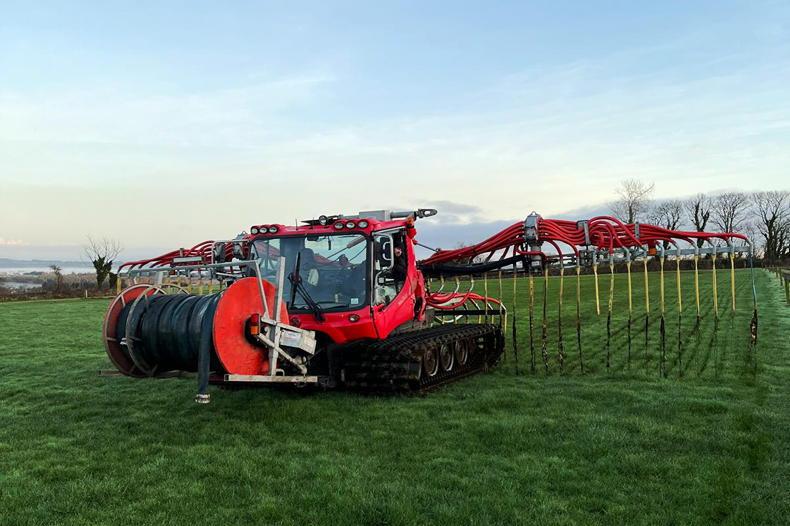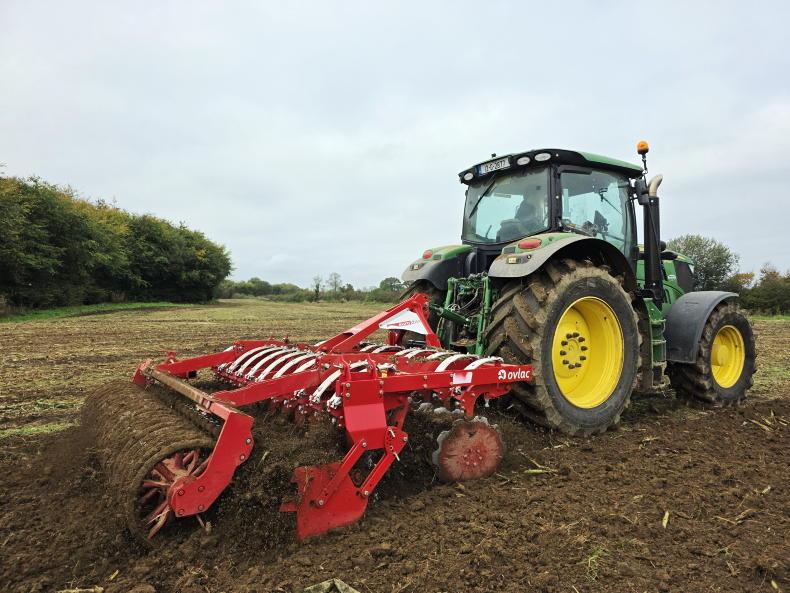Mid to late summer is usually a good time to reseed grassland on livestock farms, although currently, the frequency of rain showers will be hindering such plans.
Hopefully, weather conditions will soon turn for the better and permit farmers to rejuvenate grazing and silage swards. When it comes to reseeding, outlined are five tips to consider.
1. Fix drainage and compaction problems
If fields have areas where surface water lies, is compaction the problem or is a new drain required?
Such problems should be addressed before reseeding. Drainage does not necessarily mean a new pipe and stone channel is needed.
Sub-soiling, soil lifting machines and mole ploughs can do the job. Dig a few holes to see where the problem lies and decide on the best course of action.
2. Assume soil fertility is low
Where fields have been regularly grazed, received chemical fertiliser, dung and slurry this year, there is little point in soil sampling now as it will give a false reading. Wait until winter to test soils.
However, assume soils are low in lime, phosphate (P) and potash (K) when reseeding. Applying 1t to 2t/acre lime, along with some P and K will increase the chances of a successful reseed.
3. Stitch in grass or plough?
There are various methods for reseeding grassland, all with merits and drawbacks.
Ploughing ground will open soils and naturally improve drainage. But with broken weather, rain can delay reseeding after ploughing.
Another downside is that ploughing also leaves a soft seedbed, limiting grazing options in late summer and autumn.
Stitching or direct drilling grass into old swards can work well when conditions are right. Make sure the old sward is properly burned off to give new grass seedling a chance to establish. Lime is needed, as the dead grass will make the seed bed acidic.
There tend to be less problems with weeds when stitching as the soil is not disturbed. Animals can also graze much sooner compared to a ploughed reseed.
4. Grass varieties and clover
For swards that are predominantly grazing, go for two-thirds diploid and one-third tetraploid grasses. Go the opposite way for swards geared for multiple cuts of silage.
Diploid grasses usually tiller out better and suit grazing. Tetraploids grow tall and erect, but are more open at the sward base.
On heavier soils, Timothy is a good variety to include. Multi-species swards are also an option as July and August is a good time for establishment.
Pay attention to heading dates, which are ranked as early, intermediate and late. Grass are also ranked on early and late season growth, as well as persistency when cut or grazed.
Don’t forget about clover. Include 1kg/acre to 2kg/acre of white clover and 3kg/acre for red clover. Drill to a maximum depth of 10mm.
Small-leaf varieties suit sheep grazing, medium- to large-leaf varieties suit cattle, while large-leaf clovers suit silage swards, along with red clover.
5. Post emergence
Weeds should be less problematic with summer reseeds compared to spring, especially where new grass has been stitched in. But chickweed, redshank and docks will need controlling.
A good post emergence spray will do the job. Clover safe spray options are limited and, as such, some farmers prefer to stitch clover in after applying a post-emergence spray.
Use lighter grazing stock, such as weanlings or sheep, to graze reseeds and encourage new grass to tiller out. But be careful not to overgraze.
Read more
Beef Management: Under 16-month bulls, dairy beef weighing and Farm Safety Week
Earlier finishing and feed additives key to cutting emissions
Mid to late summer is usually a good time to reseed grassland on livestock farms, although currently, the frequency of rain showers will be hindering such plans.
Hopefully, weather conditions will soon turn for the better and permit farmers to rejuvenate grazing and silage swards. When it comes to reseeding, outlined are five tips to consider.
1. Fix drainage and compaction problems
If fields have areas where surface water lies, is compaction the problem or is a new drain required?
Such problems should be addressed before reseeding. Drainage does not necessarily mean a new pipe and stone channel is needed.
Sub-soiling, soil lifting machines and mole ploughs can do the job. Dig a few holes to see where the problem lies and decide on the best course of action.
2. Assume soil fertility is low
Where fields have been regularly grazed, received chemical fertiliser, dung and slurry this year, there is little point in soil sampling now as it will give a false reading. Wait until winter to test soils.
However, assume soils are low in lime, phosphate (P) and potash (K) when reseeding. Applying 1t to 2t/acre lime, along with some P and K will increase the chances of a successful reseed.
3. Stitch in grass or plough?
There are various methods for reseeding grassland, all with merits and drawbacks.
Ploughing ground will open soils and naturally improve drainage. But with broken weather, rain can delay reseeding after ploughing.
Another downside is that ploughing also leaves a soft seedbed, limiting grazing options in late summer and autumn.
Stitching or direct drilling grass into old swards can work well when conditions are right. Make sure the old sward is properly burned off to give new grass seedling a chance to establish. Lime is needed, as the dead grass will make the seed bed acidic.
There tend to be less problems with weeds when stitching as the soil is not disturbed. Animals can also graze much sooner compared to a ploughed reseed.
4. Grass varieties and clover
For swards that are predominantly grazing, go for two-thirds diploid and one-third tetraploid grasses. Go the opposite way for swards geared for multiple cuts of silage.
Diploid grasses usually tiller out better and suit grazing. Tetraploids grow tall and erect, but are more open at the sward base.
On heavier soils, Timothy is a good variety to include. Multi-species swards are also an option as July and August is a good time for establishment.
Pay attention to heading dates, which are ranked as early, intermediate and late. Grass are also ranked on early and late season growth, as well as persistency when cut or grazed.
Don’t forget about clover. Include 1kg/acre to 2kg/acre of white clover and 3kg/acre for red clover. Drill to a maximum depth of 10mm.
Small-leaf varieties suit sheep grazing, medium- to large-leaf varieties suit cattle, while large-leaf clovers suit silage swards, along with red clover.
5. Post emergence
Weeds should be less problematic with summer reseeds compared to spring, especially where new grass has been stitched in. But chickweed, redshank and docks will need controlling.
A good post emergence spray will do the job. Clover safe spray options are limited and, as such, some farmers prefer to stitch clover in after applying a post-emergence spray.
Use lighter grazing stock, such as weanlings or sheep, to graze reseeds and encourage new grass to tiller out. But be careful not to overgraze.
Read more
Beef Management: Under 16-month bulls, dairy beef weighing and Farm Safety Week
Earlier finishing and feed additives key to cutting emissions










SHARING OPTIONS